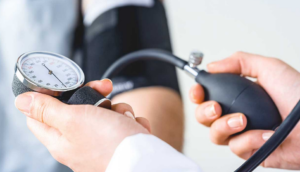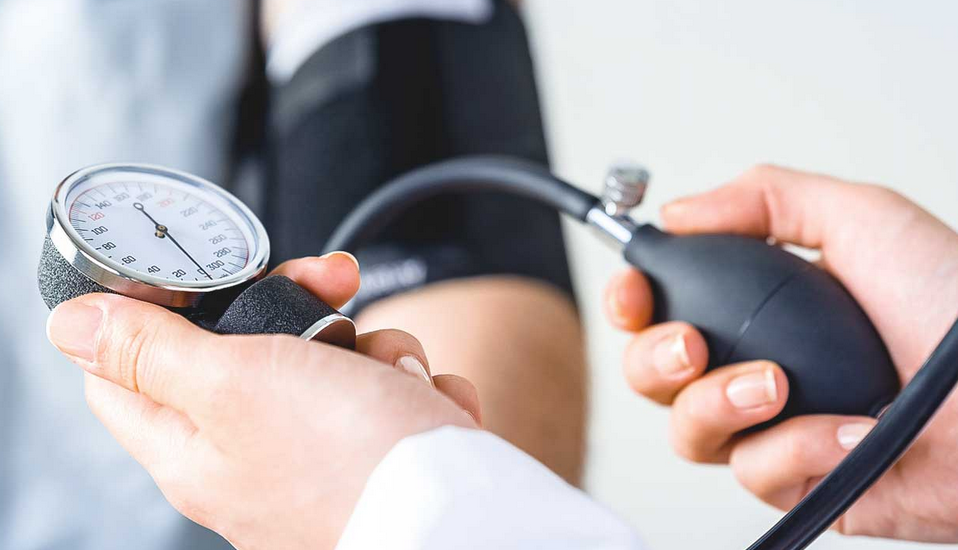A Rational Approach Considers This a Symptom – Not a Disease – And Treats The Causes
High Blood Pressure – or hypertension – is one of the most common medical conditions in the western world. If you don’t have it, you probably know someone who does. It is one of the most under diagnosed and misunderstood chronic diseases of aging – which is a shame, considering how common it is. Although lowering blood pressure with medication is very important and saves lives, it may be possible to correct the cause of the problem. What is more, there are many ways to lower blood pressure naturally.
diagnosed and misunderstood chronic diseases of aging – which is a shame, considering how common it is. Although lowering blood pressure with medication is very important and saves lives, it may be possible to correct the cause of the problem. What is more, there are many ways to lower blood pressure naturally.
We can blame high blood pressure on evolution. Just like many of our adaptive responses, our body’s system for regulating blood pressure is designed to prevent us from dying. Our plight is that the modern age is so different from the world we were designed to live in that this finely tuned instrument now does us more harm than good.
The ‘fight-or-flight’ syndrome is a mechanism for coping with life-threatening stresses in our lives. This near-instant startle response increases our heart rate and blood pressure, opens our pores and shifts blood supply to help us cope with potential attacks by animals and other enemies. The same mechanism is partly responsible for the short-term rise in blood pressure that comes from stress or anger in our everyday lives.
One of the reasons we get chronic high blood pressure is the same as the reason that our blood forms clots – to help us survive blood loss. For a million years, traumatic wounds were one of the major threats to life. Losing blood from our vessels has the same effect as losing air from a tire – it lowers the pressure inside them. If that pressure becomes too low, the heart cannot deliver blood to the tissues that need it to survive.
Our kidneys are the site of an ingenious instrument for maintaining blood pressure –millions of tiny instruments, actually. Together, they form the renin-angiotensin-aldosterone system – a family of receptors and hormones that work together to dilate and constrict our blood vessels. If blood flow to these sensors in the kidney is not high enough, it assumes we are bleeding from somewhere and makes every effort to maintain blood flow to tissues by raising blood pressure.
This system is fantastic in a world where surviving trauma is important. Now fast-forward to the 21st century, where stress, physical inactivity, poor nutrition and other chronic factors lead to atherosclerosis – narrowing of the arteries. This will also reduce blood flow to the kidney – and trigger the same renin-angiotensin-aldosterone system to raise blood pressure.
About 10% of cases of hypertension are caused by other problems. These include pheochromocytoma, coarctation of the aorta, renal artery stenosis, primary hyperaldosteronism, Cushing’s disease, thyroid disorders and certain medications. if you are under 40 or your blood pressure is very high, your doctor should rule these out with a few laboratory tests.
The other 90% of the population are said to have essential hypertension – one of those diagnoses that is not really a diagnosis, but a symptom. The root causes of this hypertension are still not totally clear, but they can be traced to the same root causes of many of the chronic diseases of aging.
Our approach to treating hypertension usually includes medication at the beginning. Although many people don’t like taking pills, it is absolutely essential to avoid high blood pressure because it puts undue stress on the heart and leads to a whole cascade of other hormone changes that contribute to stroke, kidney failure and heart failure. If successful, a natural regimen for lowering blood pressure will allow you to gradually reduce and possibly eliminate these medications when it is safe to do so.
There is clear evidence that links hypertension to diets deficient in potassium and magnesium. These minerals are naturally present in fruits, vegetables and whole grains, but modern agriculture has severely depleted our soils so that they contain less of these essential minerals than they used to. Supplement your diet with magnesium, but potassium is still best found in food. Processed foods, fast foods and packaged foods contain virtually none of these nutrients – but they do contain plenty of sodium.
Reducing salt intake has been clinically proven to lower blood pressure – and reduce cardiovascular death. Sensitivity to salt increases with age and obesity, with poor diet, and is higher in people with existing hypertension. [1] Reducing your salt intake does not mean avoiding the salt shaker – it means avoiding fast food, processed food, salad dressing, ketchup, mustard, relish and other sauces. These are the biggest sources of hidden salt.
One of our favorite ways to treat hypertension is with chelation therapy. This is because it is not treating the symptom – it is treating the cause. This is based on the notion that chelation actually improves blood flow and circulation in the blood vessels themselves. Many patients who undergo chelation to treat angina and other circulatory problems note that their blood pressure falls during therapy. If we can improve the blood flow to the kidneys – and the regulatory system – we can treat the root cause of high blood pressure.
Chelation is the international gold-standard treatment of lead intoxication, which is an important hidden cause of hypertension. Disturbing research has linked blood lead levels with high blood pressure and risk of death. [2] One of the leading causes of death in people with hypertension is kidney failure, and this is likely also related to lead. One large study of people with high blood pressure found that those with higher lead levels were almost three times more likely to develop kidney failure than those with lower lead levels. [3]
In a very encouraging recent clinical trial published in The New England Journal of Medicine, people with early kidney failure who got chelation therapy had a 50% lower risk of being on dialysis 5 years later than those who got placebo. [4] Lead is toxic at any level, but the link to high blood pressure is another reason to consider chelation therapy. Read more about chelation therapy in this link.
Three small, randomized controlled trials have tested Coenzyme Q10 in hypertension – and all three have shown significant benefit. [5] CoQ10 reduces the inflammation that leads to atherosclerosis and narrowing of arteries in the first place. Consider a minimum of 120mg of CoQ10 daily.
People with vitamin D deficiency – an estimated 60-70% of the population – have more than three times the risk of hypertension. [6] This is because vitamin D suppresses renin, which is a key hormone controlling blood pressure. Although there have been no studies addressing blood pressure, there are other benefits to taking vitamin D. These include cancer prevention, improved muscle strength and bone density and normalization of the immune system to name a few. Get your levels checked and take 1-2000 units per day. Read more about the importance of vitamin D in this link.
Many people with hypertension also have diabetes or high cholesterol. These are not simply diseases – they are symptoms of a more generalized biochemical dysfunction of the body. Combined, they are called the metabolic syndrome – and it is bad news. There are many things you can do to prevent or treat these problems, but supplementing with one or two grams of omega-3 fatty acids per day and low-dose aspirin is a start. They are proven to prevent death.
Research shows that most people who lose ten pounds will have a reduction in blood pressure. You can best lose weight by eating less, eating low-glycemic index foods and combining cardiovascular exercise with resistance training. All of these changes will also restore a normal balance to your nervous system.
The body treats stress exactly like trauma – literally. When the nervous system is under stress, it releases stress hormones that trigger a rise in blood pressure. There is growing evidence that regular yoga or meditation can lower blood pressure. Even regulated breathing exercises can affect the balance between heart and mind to calm the nervous system and lower blood pressure. Anger should be avoided and laughter should be maximized – if you needed a medical reason to follow this advice, your blood pressure is it.
The treatment of high blood pressure is one of the leading sources of revenue for the pharmaceutical industry. There are dozens of pills available, and with so much choice, physicians are sometimes confused about which drug to try first. The pharmaceutical industry often tries to influence their prescribing habits by filling medical journals with advertising, funding seminars and conferences and sending a fleet of marketing reps to visit doctors’ offices with free samples, lunches and other perks. But new is not always better. In the landmark ALLHAT study, newer blood pressure-lowering medications were compared with an older-generation pill that costs pennies a day. The cheap drug prevented almost 20% more deaths in men than the other drugs. [7] It is called a thiazide diuretic, and you should ask your doctor about it before using other blood pressure drugs.
Although many people cannot maintain normal blood pressure without medication, this is because most do not make the real changes they need to. With commitment, dedication and some rational approaches to treatment, there is no reason why you cannot normalize your blood pressure – and return to health.
1. J Am Coll Nutr. 2006;25(3 Suppl):247S-255S.
2. Circulation 2006;114:1388-94.
3. Kidney Int 2003;63:1044-50.
4. N Engl J Med 2003;348:277-86.
5. J Human Hypertension 2007;21:297-306.
6. Hypertension 2007;49:1063-9.
7. N Engl J Med 2003;348:583-92.

